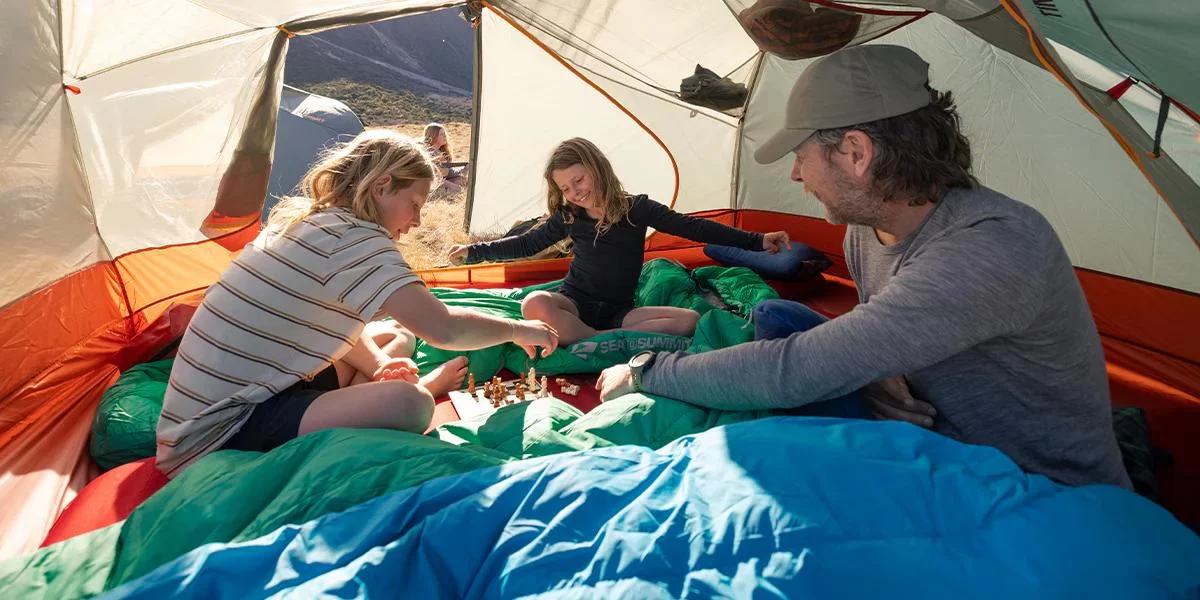How to Pick the Right Sleeping Bag for Your Camping Trip
- Why the Right Sleeping Bag Matters
- Understanding Temperature Ratings
- Choosing the Best Sleeping Bag Materials
- Shape and Size of Your Sleeping Bag
- Real-Life Example: A Camping Trip Story
- Our Recommendations for the Perfect Sleeping Bag
1. Why the Right Sleeping Bag Matters
A good night’s sleep is essential to make the most out of your camping trip, and the right sleeping bag is key to ensuring that. After a long day of hiking, fishing, or exploring, you’ll want to rest comfortably. But with so many options on the market, how do you know which sleeping bag is right for you?
Your sleeping bag is more than just a comfy place to rest your head. It’s your first line of defense against the elements, helping to keep you warm, dry, and protected during chilly nights. Whether you're camping in the summer heat or winter snow, selecting the right sleeping bag ensures that you'll stay safe and comfortable. Picking a poor-quality sleeping bag or one that's not suitable for the weather conditions can result in sleepless nights or even risk your safety. So, let’s dive into the factors that will help you make the best decision.
2. Understanding Temperature Ratings
The most important factor when choosing a sleeping bag is the temperature rating. This rating tells you the lowest temperature at which the sleeping bag will keep you warm. If you're camping in a cooler climate, you’ll need a sleeping bag designed to handle lower temperatures. Conversely, if you're headed to a warm-weather destination, a lightweight bag with a higher temperature rating may be best.
For example, when camping in the early spring or fall, when temperatures can drop unexpectedly, a sleeping bag rated for 20°F to 32°F will offer the warmth you need. But in the summer months, a 35°F or higher-rated bag might be more appropriate to avoid overheating.
Many modern sleeping bags also feature a "comfort" and "limit" rating, giving you a clearer idea of how a bag will perform under various conditions. Pay close attention to these ratings when planning your trip.
3. Choosing the Best Sleeping Bag Materials
3.1 Insulation Types
The insulation inside your sleeping bag plays a critical role in determining its performance. There are two main types of insulation: synthetic and down.
Synthetic insulation is typically less expensive and retains warmth even when wet, making it an ideal choice for humid or rainy conditions. However, it’s generally bulkier and heavier than down.
Down insulation is lighter, more compressible, and provides better warmth-to-weight ratios, making it the choice for those looking to save space and weight on longer trips. But it’s more expensive and loses its insulating properties when wet, so it’s not ideal for damp conditions unless treated with water-resistant coatings.
3.2 Outer Shell Materials
The outer fabric of your sleeping bag also matters. A durable, water-resistant shell is a good option if you anticipate exposure to moisture. On the other hand, if you’re camping in dry conditions, a lighter, breathable shell may be more suitable. Many modern sleeping bags feature coatings like DWR (durable water repellent) to help prevent moisture from seeping in.
4. Shape and Size of Your Sleeping Bag
Sleeping bags come in various shapes to suit different preferences and needs. The three main types are:
- Rectangular Sleeping Bags: The most spacious, providing extra room for movement. However, they don’t retain heat as well as mummy bags, making them less suitable for cold weather camping.
- Mummy Sleeping Bags: These are designed to hug the body, providing maximum warmth retention. The snug fit helps to minimize heat loss, making them ideal for colder climates. However, they may feel restrictive for some campers.
- Semi-Rectangular Sleeping Bags: A compromise between the spaciousness of rectangular bags and the warmth of mummy bags. They offer more comfort than mummy bags but are still designed to trap heat more effectively than rectangular ones.
Size is another consideration. Ensure that your sleeping bag is long enough to comfortably fit your height. Many manufacturers offer bags in regular, long, and extra-long sizes, so there’s no need to settle for one that doesn’t suit your frame.
5. Real-Life Example: A Camping Trip Story
On my recent camping trip to the Rocky Mountains, I learned the importance of selecting the right sleeping bag the hard way. I had chosen a sleeping bag rated for 40°F for my summer trip, but temperatures unexpectedly dropped to 30°F at night. Despite my layers, I spent the entire night shivering in my bag. I quickly realized that I should have gone for a sleeping bag with a lower temperature rating.
Thankfully, a fellow camper had a 20°F-rated bag, and he kindly lent it to me. The difference was night and day! It’s a lesson I’ll never forget — always check the weather forecast and err on the side of caution when choosing your sleeping bag’s temperature rating.
6. Our Recommendations for the Perfect Sleeping Bag
Here are a few of our top recommendations for camping sleeping bags based on various conditions:
- Best for Cold Weather: The Pine Cliff Insulated Down Sleeping Bag offers warmth and comfort with its 20°F rating and water-resistant down filling. Perfect for chilly mountain trips.
- Best for Summer Camping: The Pine Cliff Ultralight Sleeping Bag is a compact, breathable option designed for warm weather, with a 40°F temperature rating that keeps you comfortable in heat.
- Best for Versatility: The Pine Cliff 3-Season Sleeping Bag provides the best of both worlds, with a 30°F rating suitable for spring, summer, and fall adventures.
No matter what kind of camping you’re planning, choosing the right sleeping bag is essential for a good night’s rest. With the right choice, you’ll wake up refreshed and ready to tackle your next adventure.







